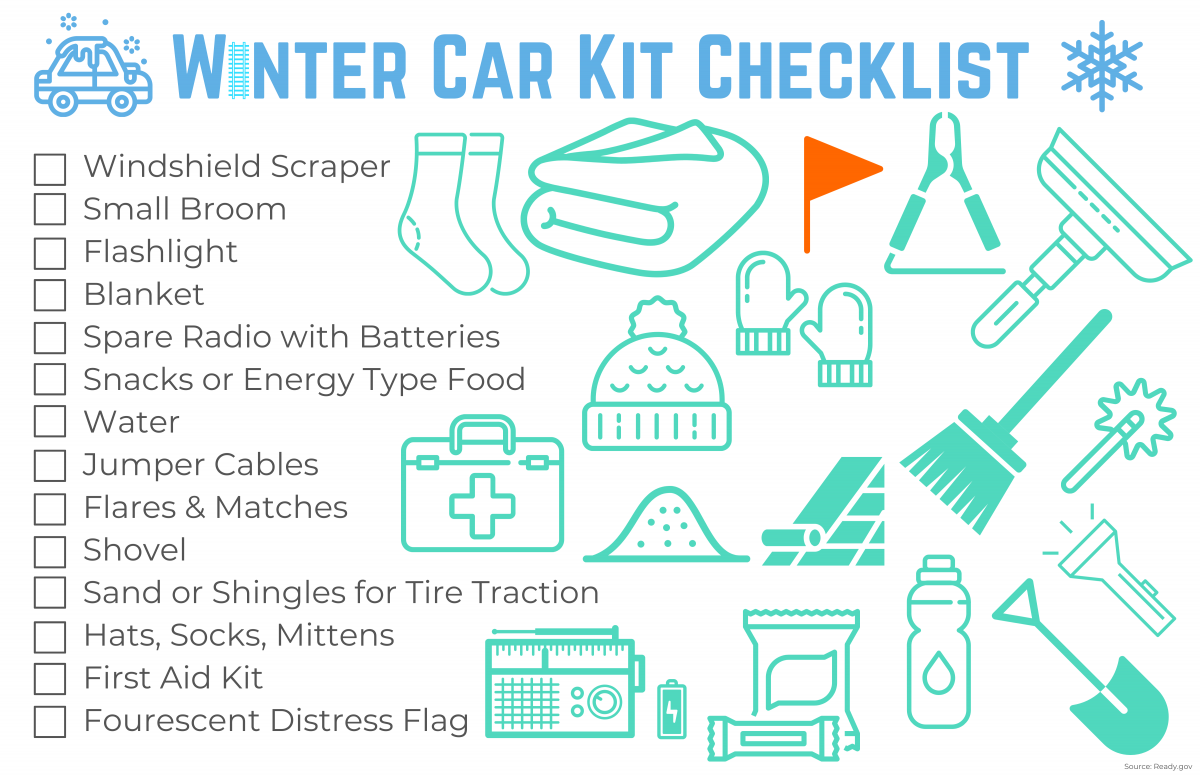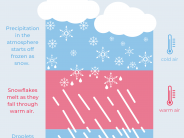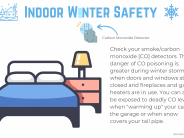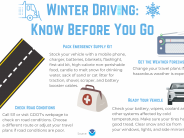Winter Weather Safety

We want you to be as safe as possible during winter - especially when bad weather hits. Winter storms create a higher risk of accidents, frostbite, hypothermia, and carbon monoxide poisoning. Did you know there tends to also be an increase for the risk of a heart attack? That can be a result of overexertion. Storms that move through can bring extreme cold, freezing rain, snow, high winds, and ice.
Ready.gov gives these tips on How to Protect Yourself from Winter Weather:
* If you are under a winter storm warning, find shelter right away
Weather Terms to Know:
- Winter Storm Warning: Issued when hazardous winter weather in the form of heavy snow, heavy freezing rain, or heavy sleet is imminent or occurring. Winter Storm Warnings are usually issued 12 to 24 hours before the event is expected to begin.
- Winter Storm Watch: Alerts the public to the possibility of a blizzard, heavy snow, heavy freezing rain, or heavy sleet. Winter Storm Watches are usually issued 12 to 48 hours before the beginning of a Winter Storm.
- Winter Weather Advisory: Issued for accumulations of snow, freezing rain, freezing drizzle, and sleet which will cause significant inconveniences and, if caution is not exercised, could lead to life-threatening situations.
Know your Risk for Winter Storms:
Pay attention to weather reports and warnings of freezing weather and winter storms. Listen for emergency information and alerts. Sign up for your community’s warning system. The Emergency Alert System (EAS) and National Oceanic and Atmospheric Administration (NOAA) Weather Radio also provide emergency alerts.
Preparing for Winter Weather:
Prepare your home to keep out the cold with insulation, caulking and weather stripping. Learn how to keep pipes from freezing. Install and test smoke alarms and carbon monoxide detectors with battery backups. Gather supplies in case you need to stay home for several days without power. Keep in mind each person’s specific needs, including medication. Remember the needs of your pets. Have extra batteries for radios and flashlights. If you are unable to afford your heating costs, weatherization or energy-related home repairs, contact the Low Income Home Energy Assistance Program (LIHEAP) for help.
In Case of Emergency:
Be prepared for winter weather at home, at work and in your car. Create an emergency supply kit for your car. Include jumper cables, sand, a flashlight, warm clothes, blankets, bottled water and non-perishable snacks. Keep a full tank of gas.
Stay Safe During Winter Weather:
* Avoid carbon monoxide poisoning. Only use generators and grills outdoors and away from windows. Never heat your home with a gas stovetop or oven.
- Stay off roads if at all possible. If trapped in your car, then stay inside.
- Limit your time outside. If you need to go outside, then wear layers of warm clothing. Watch for signs of frostbite and hypothermia.
- Reduce the risk of a heart attack by avoiding overexertion when shoveling snow and walking in the snow.
Signs of, and basic treatments for, frostbite and hypothermia:
Frostbite causes loss of feeling and color around the face, fingers and toes.
Signs: Numbness, white or grayish-yellow skin, firm or waxy skin.
Actions: Go to a warm room. Soak in warm water. Use body heat to warm. Do not massage or use a heating pad.
Hypothermia is an unusually low body temperature. A temperature below 95 degrees is an emergency. Signs: Shivering, exhaustion, confusion, fumbling hands, memory loss, slurred speech or drowsiness.
Actions: Go to a warm room. Warm the center of the body first—chest, neck, head and groin. Keep dry and wrapped up in warm blankets, including the head and neck.



